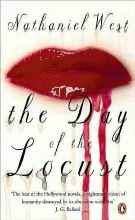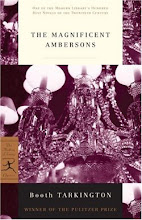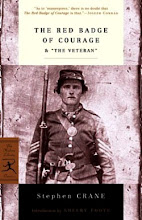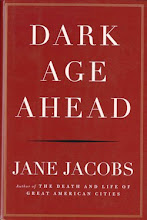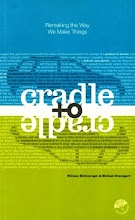
On my way to Baton Rouge, I felt like the baby in the king cake. Mardi Gras is not only celebrated in New Orleans this time of year, it is celebrated throughout many towns and parishes in Louisiana. The king cake is one of the many Mardi Gras traditions.
The King Cake began in 12th century France where the cake would be baked on the eve of January 6 to celebrate the visit to the Christ Child by the three Kings. A small token was hidden in the cake as a surprise for the finder. But the origins go back a little further than that and as you would guess; it has something to do with the Catholic Church.
The King's Cake has its roots in pre-Christian religions of Western Europe. It was customary to choose a man to be the "sacred king" of the tribe for a year. That man would be treated like a king for the year, then he would be sacrificed, and his blood returned to the soil to ensure that the harvest would be successful. The method of choosing who would have the honor of being the sacred king was the King's Cake. A coin or bean would be placed in the cake before baking, and whoever got the slice that had the coin was the chosen one.
When Christianity extended its influence and began overshadowing the religions that came before it, many of the local customs were not outright abolished, but instead were incorporated into Christian tradition and given a new spin. This even happened to the tradition of Mardi Gras. Catholic priests were not predisposed to human sacrifice, so the King's Cake was converted into a celebration of the Magi, the three Kings who came to visit the Christ Child.
French settlers brought the custom to Louisiana in the 18th century where it remained associated with the Epiphany until the 19th century when it became a more elaborate Mardi Gras custom. In New Orleans, the first cake of the season is served on January 6. A small ceramic figurine of a baby was hidden in the cake. Whoever found the baby was allowed to choose a mock court and host the next King Cake party the following week (weekly cake parties are held until Mardi Gras ).
The classic king cake is oval-shaped, like the pattern of a racetrack. The dough is basic coffee-cake dough, sometimes laced with cinnamon, sometimes just plain. The baby hidden in the cake speaks to the fact that the three Kings had a difficult time finding the Christ Child. The cake is then baked, and decorated when it comes out.
The flight to Baton Rouge has the standard plane change in Memphis. The weekend before Mardi Gras was probably not a good travel day to Baton Rouge because most all the flights were booked. I was able to get the last seat in the back of Northwest DC-9 where the seats are sized for average human of the 14th century. This would be just another full 90 minute flight backed in a middle seat. I hoped my row partners would be swimsuit models, but after 25 years of flying it has never happened before, why should this flight be any different.
My routine in Memphis airport is to run into the concourse between flights and pick up the immense ½ pound pork shoulder sandwich at the famous Jim McNeely’s Instate BBQ. The smell of BBQ immediately stikes you as you enter the concourse from the plane. I think McNeely’s and the other world famous BBQ Corky’s pay the airport to recycle the air from their smokers to the jet ways. The short lay over of 45 minutes requires all the skill of the seasoned road warrior to obtain a sandwich, because the line for BBQ typically snakes down the concourse at least two or three gates. My timing was perfect; I secured the prized sandwich and got back to the Baton Rouge gate just as they were finishing up the boarding process.
Strolling down the jet way, I thought it was going to be difficult to find empty overhead space to store my carry on. I’ll just cram it under the seat like I’m done so many times in the past. Passing the seats in the front cabin, I realized the flight was completely full. Slowly I followed the line and made my way to the back of the plane to my seat located in the last row. The last passenger in front of me sat down about six rows before my seat. As the view of the seat opened, my mouth hit the floor. Oh, my god this can’t be my seat.
Sitting in the aisle and window seats were two of the largest black women I have ever seen. You could tell they were sisters, because they both were dressed in traditional Mardi Gras-colored costumes. The traditional Rex colors of Mardi Gras is Purple, representing Justice; Green representing Faith; Gold representing Power. Hundreds and hundreds of pounds covered with the most brilliant colors possible.
I attempted to refocus on my seat, but it was hidden under a sea of color. The ladies were so large that they met and pressed together in the center of the row where my seat should have been. Their enormous ponderous breasts were pressed along their entire length. Their gargantuan thighs flowed into each other like two opposing mud slides from a great mountain range. Somewhere between all that flesh was my $700 seat. I opened my mental travel folder, attempting to find some similar experience I could rely on to leverage myself into a more comfortable position. No, I had to admit this was a new travel problem I was completely unprepared for. I knew first class was full? I knew they wouldn’t let me sit on the blue water bathroom seat for the entire flight? I knew the flight attendant wouldn’t let me sit on her lap for the flight?
The total disbelief must have showed in my face, because the lady on the aisle looked up at this pitiful figure in shock and let out this huge bellowing laugh. She then looked over at her sister and they both started howling at the top of their lungs. With each laugh their bodies quivered and rolled like the land below an earthquake. Wiping the tears of joy running down her cheek, she was finally able to call out. “Come on honey, just bring that cute white ass back here, we don’t bite.” Their laughter was infectious and started to place my mind at ease. I had to smile as I replied “Are you sure you two don’t bite, I’ve been fooled before.”
“Get back here so we can get to Mardi Gras. I’m Bertha and this is my sister Mabel.” After I introduced myself, I asked “So how we going to do this?” I found a place to stow my luggage in the overhead and proceeded to climb over Bertha in an attempt to find my seat. “Don’t be shy honey. You look like you never been with a pair of sisters before?” as Mabel pulled my arm so I wouldn’t stumble. I asked Mabel to hold my sandwich as I turned to begin a burrowing process to find my seat. I felt like a weevil burrowing into a cotton bowl as I twisted and turned my butt deeper into the mountain of flesh hiding my seat. The ladies giggled as they each pulled an enormous breast to the side to aide my effort. After a minute or two of struggling I found the top of the cushion and relaxed.
As I relaxed so did the ladies allowed their breasts to fold over my shoulders. I was completely covered from the neck down, unable to move my arms. Mabel looked over and started laughing again. “If you can’t breathe let me know.” I was unable to buckle my seat belt. What’s the need I’m packed in here totally immobile? It is probably the safest plane ride I will ever take. We started talking and the ladies were going to attend the annually Mardi Gras parade where they are installed as the queens. We laughed and traded stories.
I made a deal with the sisters to share my pork shoulder BBQ sandwich if they would feed me because I could not raise my hands. I ordered a round of bourbons on the condition that I will pay the flight attendant after the plane landed when I could reach my wallet. There I was totally helpless being feed BBQ and bourbon by two official Mardi Gras queens. The world can surprise you when you least expect it. The ride was one of the most memorable ever. We laughed and joked some more and eventually had the entire back of the plane rolling.
After we landed and I was able to stand, I gave both Mabel and Bertha a big sloppy kiss for being such good sports. I wasn’t able to hug them because my arms had fallen asleep under the weight. As we said goodbye, I thought how nice it was being surrounded by so much sweetness and happiness. I felt like I was the little baby in a king cake.
I was staying at a guest house of a business associate. In the morning he brought in Baton Rouge’s finest king cake and made some coffee. King cake is traditionally served with chicory coffee' as Coffee' au lat'. It is best eaten warm. As I place the first bite of this year’s king cake in my mouth, I found the little plastic baby. I promised to share my good fortunes with the group by buying dinner that night. Good fortune is in store for me this year after being crowned the baby by two Mardi Gras queens.






















